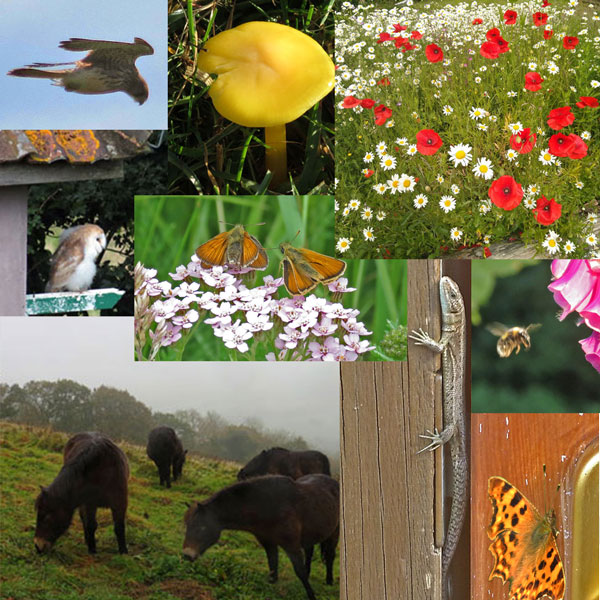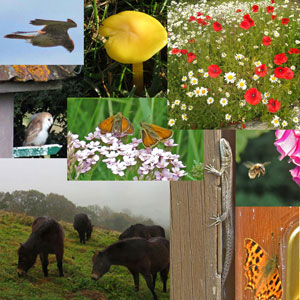This site is about two patches of land in the Blackdown Hills—Meadow on the Hill and Meadow by the Brook—and the wildlife seen there.
Until a few years ago both these plots were used for livestock grazing or making silage, so consisted mostly of grass, with bullocks let in to graze or tractor brought in to cut, before many wildflowers had a chance to mature.
Now the meadow on the hill, which is very steep, is grazed in the autumn by moorland ponies (Dartmoors or Exmoors) that are happy to eat down the grasses and herbs when they have become coarse and unsuitable for modern livestock breeds. We are very grateful to the RSPB who help us each time their ponies are moved on and off the meadow. We joined the RSPB not long after moving to the area and reading the RSPB magazine helped inspire us to convert our garden area into something more than just a place that has the grass cut every week. The local Wildlife Trust were able to survey our field on the hill, provide us with a list of plant species and advise on ways to help it become the meadow on the hill.
The meadow by the brook is more of an experiment: paths through it are maintained with a cut-and-collect mower, some areas are cut low each autumn and again in early spring, other areas are left alone most of the year. This allows for a larger range of species to find their niche. Some smaller areas, especially wildflower patches near the house, are cut occasionally with an Austrian scythe—a pleasant tool to use compared with a rackety motor mower.
Identifying the species we find can be difficult – we are not ecologists, ornithologists, entomologists, mycologists or any other ’ologist – so thank-you to all the people online who have scrutinised our photos and helped with that. Any remaining errors are ours. This website will be updated as time permits: there are still photos of lizards, voles, snakes, insects and plant species to process, along with details of what bats have been detected so far, so please revisit from time to time.



